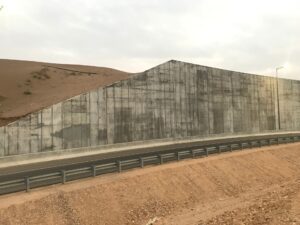While the forces of nature will always win out over time, you can help keep erosion in check for a long time with the help of a retaining wall. What’s that? A retaining wall is simply a barrier usually made from stones or concrete that prevent earth and dirt from sliding downhill due to erosion. While holding earth in place is helpful, there can be plenty of other functional reasons to put up a retaining wall.
Why Are Retaining Walls Important and What Functions Can They Serve?
Preventing Gravity From Taking Control
Obviously gravity is a constant force, but you can reduce its effects through the use of a retaining wall. By putting one up, you can prevent soil from shifting or eroding downhill so that your property doesn’t get covered in dirt due to storms or landslides.
Making Land and Soil Usable
One of the biggest reasons to get a retaining wall is to make additional space on your property that would otherwise be unusable. For instance, if the land on your property is sloped to be very steep it becomes very difficult to build anything on. By constructing a retaining wall, you can dig out a flat area for future or immediate use without disrupting your entire space and prevent the land from sloping in future from erosion.
Control Rainwater
In areas with heavy rain or snowfall, the water runoff can quickly erode the landscape of your home or commercial property. Furthermore, the runoff can also flood nearby land which can be avoided through the setup of a retaining wall.
Protecting the Foundation of Your Property
Erosion is rarely good when it comes to land, but it can be especially problematic when it starts to reveal your home or property’s foundation. If the soil around a downhill foundation is breaking away (or if an uphill foundation is being compacted against by soil) a retaining wall can help.

Types of Retaining Walls
As we previously mentioned retaining walls are typically made in one of two ways. Through interlocking stone or poured concrete, or through natural stone. Natural stone is the most aesthetically pleasing, but the former options can last for an incredibly long time.
There are about 10 different types of retaining walls. Each has its own benefits, drawbacks, and situations where they’re most appropriate to construct.
- Gravity retaining wall
- Cantilever retaining wall
- Counterfort retaining wall
- Buttress retaining wall
- Crib retaining wall
- Gabion retaining wall
- Sheet pile retaining wall
- Anchored earth retaining wall
- Diaphragm retaining wall
- Reinforced earth retaining wall
Overall, retaining walls can be immensely useful and an excellent investment to make for any property where soil erosion, space, or run-off are an issue.
